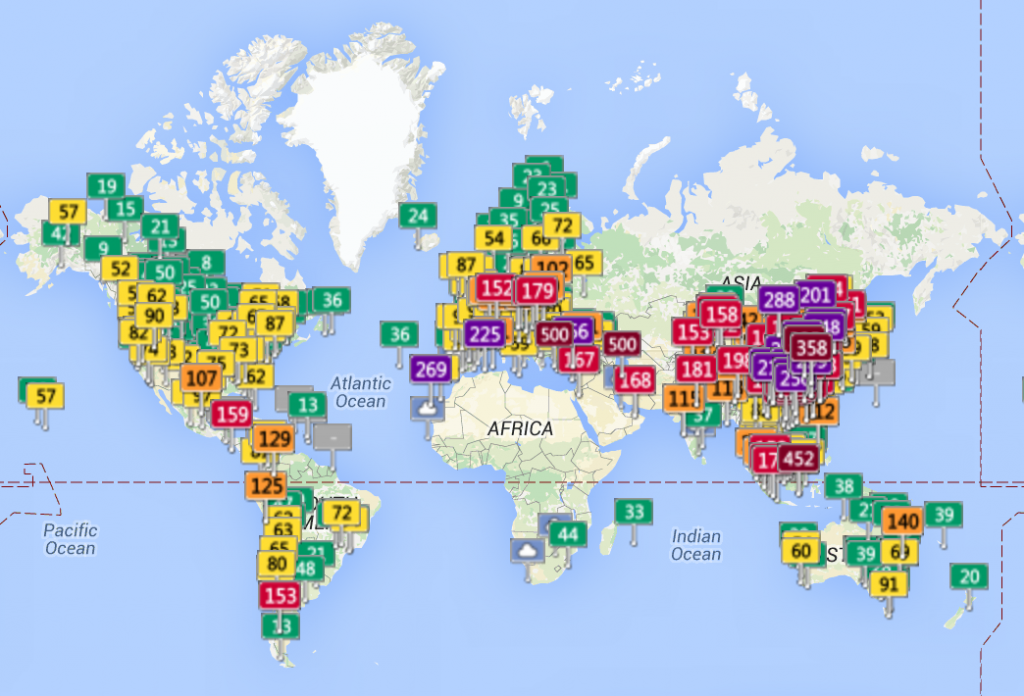characteristics
Sri Lanka
Sri Lanka has been under increasingly air quality problems due to rapid rise in emissions of particulate matter and noxious gases from vehicular traffic, industrial emissions particularly from thermal power generation plants, rapid urbanization and trans-boundary transport of atmospheric contaminants from the Asia continent. Sri Lanka’s Ministry of Environment estimated in 2011 that emissions from motor vehicles accounts for 55-60% of air pollution, 20-25% due to industries and 20% from domestic sources.
Since 2011, there has been a rapid rise in installation of electricity generation plants including a 900 MW coal power plant at Puttalam and other thermal generation plants. The thermal power generation is due to increase rapidly due to rising demand and reductions in generation by hydro-electricity due to declining stream flow. The number of vehicles too is rising and although recently emission testing has been mandated, the rise in emissions from 3 – wheel auto-rickshaws has aggravated air quality particularly in urban settings. The transport of emissions from the Asia continent to Sri Lanka is also becoming a significant source of pollution at higher elevations.
The impact of the increasing air quality issues on the environment and climate are poorly understood. Preliminary studies on the impact of noxious gases and particulates on the atmospheric chemistry at ground level points to deleterious impacts on land and water quality points (Illeperuma, Ziyath et al., 20xx). There are no studies on the impact of particulates on cloud formation and modulation of rainfall – there is a clear decline in rainfall in the upper catchments of the western hill slopes (Lyon, Zubair, et al., 2011, Zubair and Chandimala, 2006, Wickramagamage, ) in the last 3 decades coinciding with an era of rapid rise in emissions.
Globally
Air pollution kills an estimated seven million people worldwide every year. WHO data shows that 9 out of 10 people breathe air containing high levels of pollutants.
From smog hanging over cities to smoke inside the home, air pollution poses a major threat to health and climate. The combined effects of ambient (outdoor) and household air pollution cause about seven million premature deaths every year, largely as a result of increased mortality from stroke, heart disease, chronic obstructive pulmonary disease, lung cancer and acute respiratory infections.
More than 80% of people living in urban areas that monitor air pollution are exposed to air quality levels that exceed WHO guideline limits, with low- and middle-income countries suffering from the highest exposures, both indoors and outdoors. (Source: WHO)

China
Air pollution is one of China’s most serious environmental problems. Coal is still the major source of energy, constituting about 75% of all energy sources. Consequently, air pollution in China predominantly consists of coal smoke, with suspended particulate matter (PM) and sulfur dioxide (SO2) as the principal air pollutants. In large cities, however, with the rapid increase in the number of motor vehicles, air pollution has gradually changed from the conventional coal combustion type to the mixed coal combustion/motor vehicle emission type. Currently, inhalable particles (PM <10 μm in aerodynamic diameter; PM10), SO2, and nitrogen dioxide (NO2) are the criteria pollutants of concern in China.
(Source: https://www.ncbi.nlm.nih.gov/pmc/articles/PMC2685855/)
South Asia
Air pollution exposure is the second most important risk factor for ill health in South Asia, contributing to between 13% and 21.7% of all deaths and approximately 58 million disability adjusted life years (DALYs) through chronic and acute respiratory and cardiovascular illnesses. Among the top 30 cities in the world with the poorest air quality in 2016, 17 are in South Asia. The impact of air pollution transcends boundaries. The “brown cloud”—caused by pollution from carbon aerosols—is a phenomenon captured in satellite images of atmospheric haze over South Asia, as well as China. South Asia has one of the highest concentrations of black carbon emissions from cars and trucks, cooking stoves, and industrial facilities. In addition to their effect on health, black carbon particles are a short-lived climate pollutant with a possible impact on precipitation patterns and on the Himalayan glacier system, which threatens water resources in the region.
(Source: https://www.bmj.com/content/359/bmj.j5209)
